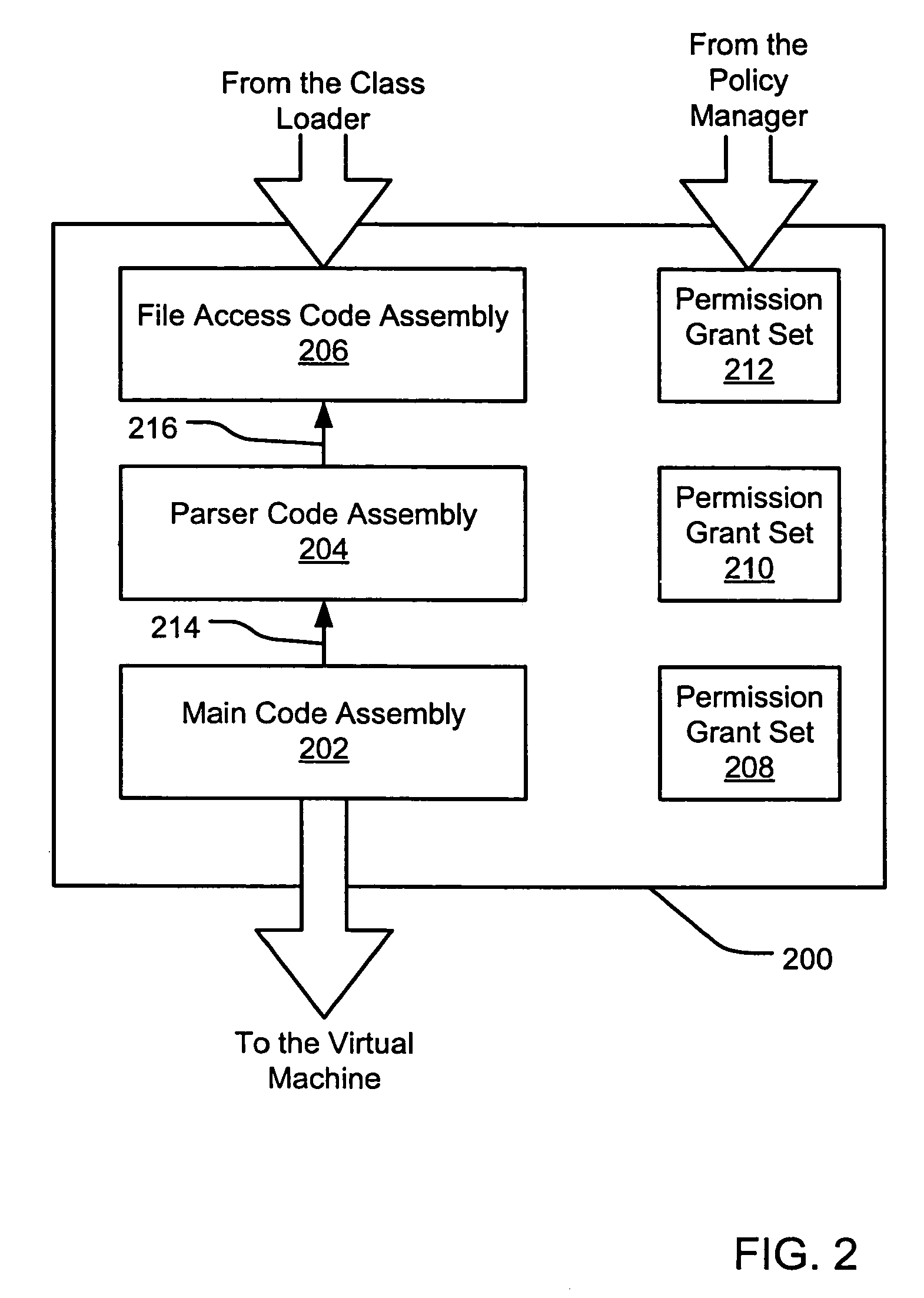Evidence-based application security
a technology of application security and evidence, applied in the field of computer security, can solve problems such as inflexible and cumbersome control of user's system, security risks, and and achieve the effects of reducing the number of users, reducing the number of applications, and increasing the difficulty of unauthorized access to user's system
- Summary
- Abstract
- Description
- Claims
- Application Information
AI Technical Summary
Benefits of technology
Problems solved by technology
Method used
Image
Examples
Embodiment Construction
[0026]Evidence-based application security may be implemented at the application and / or application group levels. When an application or application group is received, it is initially untrusted to prevent unauthorized access to protected areas (e.g., a file system of a computer). Evidence is evaluated to determine whether the application or application group should be trusted.
[0027]A manifest may define one or more applications and / or application groups, and evidence to be evaluated during a trust decision. Manifest may be used by the policy manager in making these trust decisions. The policy manager evaluates application evidence for the application or application group relative to one or more conditions defined by a security policy specification. If the application evidence satisfies the condition(s) for trusting an application or application group, the application components (e.g., code assemblies) can be executed on the computer system.
[0028]The application components may be furt...
PUM
 Login to View More
Login to View More Abstract
Description
Claims
Application Information
 Login to View More
Login to View More - R&D
- Intellectual Property
- Life Sciences
- Materials
- Tech Scout
- Unparalleled Data Quality
- Higher Quality Content
- 60% Fewer Hallucinations
Browse by: Latest US Patents, China's latest patents, Technical Efficacy Thesaurus, Application Domain, Technology Topic, Popular Technical Reports.
© 2025 PatSnap. All rights reserved.Legal|Privacy policy|Modern Slavery Act Transparency Statement|Sitemap|About US| Contact US: help@patsnap.com



